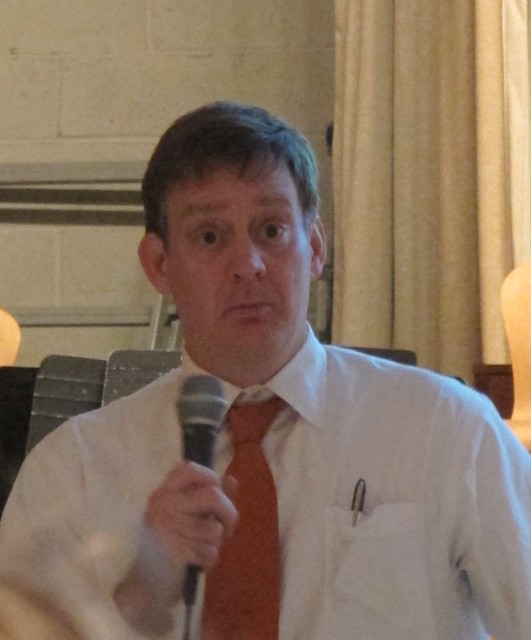Most of last night's Gowanus Superfund Community Advisory Group's general meeting was dedicated to a discussion with NYC's Department Of Environmental Protection and the agency's role in the clean-up of the polluted waterway.
Commissioner Carter Strickland was on hand to give a presentation on DEP's Gowanus Canal Water Quality Improvement plan, which aims to control the Combined Sewer Overflow (CSO) by upgrading the Gowanus Facilities. The $140 million upgrade to the wastewater pumping station at the head of the Canal is currently under way and will supposedly reduce CSOs by 34% and significantly reduce 'floatables'. It will also increase the pumping capacity from 20 million gallons a day to 30 MGD.
In addition, the agency is planning on dredging to control odors.
DEP is in the early stages of evaluating projects such as High Level Storm Sewers (HLSS), which could divert stormwater run-off from the combined sewer system and thereby result in fewer CSO events. HLSS will be designed for the 96-acre area bounded by 1st Place, 4th Avenue, State Street and 3rd Avenue. DEP believes that these HLSS will capture 50% of the drainage area runoff.
Commissioner Strickland also mentioned that New York City is investing $735 million in its city-wide Green Infrastructure plan, which will control runoff from 10% of impervious surfaces. "We are searching constantly for better ways. To find cost effective solutions" he stated.
After the presentation, members of the CAG engaged Commissioner Strickland in a brief question and answer session. It was apparent from some of the questions that many felt that that the DEP was still lacking the will to actually do what was needed to really improve water quality. As Marlene Donnelly of Friends And Residents Of Greater Gowanus pointed out, the DEP is still relying on rainfall data from 1988, a historically dry year in which rainfall totaled 40". However, in the last 10 years, the area has seen an average of 60" of rainfall a year. "Your model is not adequate" Donnelly pointed out. "Looking into the future, we need a model that is based on real rainfall."
Steven Miller, another CAG member, criticized DEP for not exploring and investing in gray infrastructure and for not including retention basins in their plan.
Another member pointed out that $735 million was a lot to spend on NYC's Green Infrastucture plan to manage a mere 10% of rainfall.
Member Lizzy Olesker expressed it best when she said that she was disappointed by the presentation and the lack of transparency. The DEP was still not engaging with the community, she felt. "What is it? A lack of political will?"














0 comments:
Post a Comment